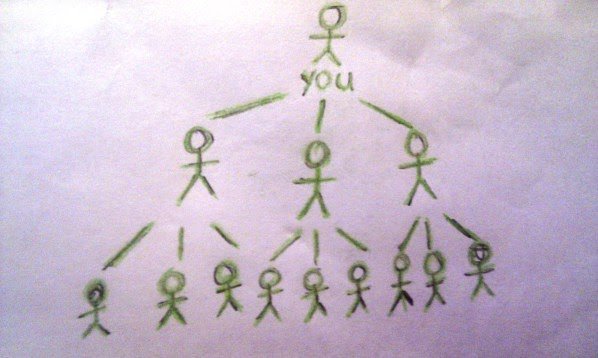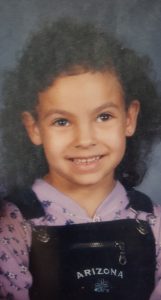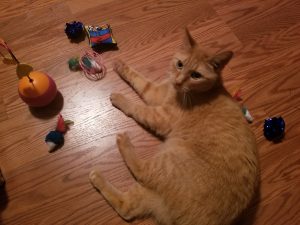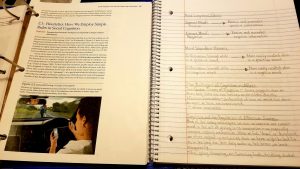
The fifth and final assignment, “Pay It Forward”, was actually very helpful in learning the different motivations that were present during my own actions of prosocial behavior required for the assignment. For the assignment, we were required to engage in five acts of prosocial behavior (or be kind to five strangers) and then write about the experiences, our reactions to the kindness, the other person’s reaction to the kindness, and then discuss the viability of that behavior becoming a normal, common, everyday occurrence.
I think in order to do this assignment as effectively as possible, you had to be completely honest about your own internal thought processes during the acts of kindness and be able to look back and analyze what you were thinking and how you felt. Although no one wants to admit selfish motivations behind doing something kind, you would have to admit when that occurred honestly for the assignment to be completely truthful and to be able to compare your motivations to those definitions in the textbook. For instance, in one instance my motivations for being kind were reciprocal in nature; I was hoping that being kind to some customers that came in after serving time would create loyal customers down the line. I did not actually want to serve them out of the “kindness of my heart”, that day I really wanted to just go home, but my motivations for the prosocial behavior I exhibited that night created not only four loyal customers, but some of their social circle as well: an investment with exponential returns.
This assignment (when done right) was highly insightful into my own motivations behind prosocial behavior and because of what I learned from the assignment, switching back and forth between documenting my prosocial behavior and learning the various theories of altruism, I will now be able to better analyze motivation of prosocial behavior in the future; those of others as well as myself.
Photo credit: https://slummytoyummymummy.wordpress.com/2012/02/15/pay-it-forward/amp/
ATA 3:
The third assignment, “prejudice”, wasn’t that helpful to me personally, but I can see how it can be very helpful to others that may not have previous exposure or exposure that was extensive in terms of discrimination, prejudice, and stereotypes. For the assignment, we were required to watch a YouTube video where Michael Richards of Seinfeld and Curb Your Enthusiasm went on a racist tirade on stage due to some hecklers in the audience. After viewing the video, we wrote about whether or not the outburst was actually racist, the extent of which the racist comments were meant to inflict emotional pain (rather than due to innate racism), and whether or not racial slurs can even exist without racism or racial intent.
From this assignment, I did learn the actual psychological terms for many of the facets of prejudice and discrimination, but it’s one of those things that you know of, you know about it, and you know it exists, but you don’t know the exact terms or names for these phenomenon (rather than the entire concept(s) being unknown). A very simplistic example of my point: those little plastic or metal ends of shoe laces; we all know of them, have seen them, have experiences with them and know they exist, but some may not know they are called “aglets”. The assignment was helpful in essentially matching much of what I already know to the scientific/psychological terms.
The assignment was personally relevant to me because direct discrimination, prejudice, and stereotypes have been a part of my life and my family’s life for as long as I can remember. I am biracial, the oldest within my immediate family, my father is black, and my mother is white. I learned from a very early age as the oldest that my existence was unacceptable from my own family members, the worst physical and verbal assaults coming from my own grandmother (the reason I mention being the oldest of my three siblings is because the brunt of hatred was directed at myself first, and as time went on, my younger sisters were born and the idea of our collective existences became more and more tolerable). What made the racism in the video so apparent to myself is that I recognize the anger and the words behind the anger as the same venom I recall hearing often; the venom is not “clean” of racist ideals just because someone is angry, and they intend to cause pain.
As a reflection, I remember being a kid and all of the lessons learned about being “different” and the learning curve both of my parents had to hurdle over, I chose this photo because (would you believe?) my parents let me go to school with jerry curls! (My Mom had no idea how to treat black/biracial hair growing up!) But despite all the teasing at school for being biracial (and my hair!) and the constant putdowns whenever there was a family gathering, I took from what I learned as a kid to heart. I knew how my extended family made me feel, I never wanted anyone else around me to feel that way; as a woman now, I remember that pain but with indifference, and maybe even pity.


ATA 2:
The second assignment, “self-portraits”, was helpful in a lot of ways, but my takeaway was that it wasn’t as helpful as the initial assignment in terms of reinforcing the concepts of chapter four “The Self”, but it did offer a lot of freedom in terms of what we could write about. The assignment required us to look at a representative group of photos of ourselves and essentially reflect on our own lives through these photographs. This was already a difficult starting point as I personally don’t take a lot of pictures in general, but I was grateful for “the cloud” to be able to look through and find enough to do the assignment.
From this assignment I did learn more about the concepts of self-control and self-presentation by reading over that portion of the chapter again, but I felt like I learned more about my own changing/evolving self than the actual material. Because of the level of self-reflection required of the assignment, I was able to see that I had a bit more self-control than I give myself credit for; due to that, I can use the outside observer technique in the future to better evaluate my own strengths and weaknesses. Seeing the photos of me and my cat Gizmo also made me reflect on him and the revelations associated with him; since classes began in the Spring, I also began a part-time job at my friend’s store and have not been home as often as previously. On top of that, when I am here, I am often busy completing assignments. Ironically, the assignment made me realize how neglectful I had been to Gizmo since school and work began and it also seems to be why he has been “acting out”; thanks to the revelation, I invested in some interactive play toys for him and have made an effort to play with him when I have a few extra minutes. In a way, the assignment I was pushing him away to finish made us closer friends!
ATA 1:

Starting the initial assignment, I was frustrated because I had to go back and read through each heuristic description quite a few times to differentiate how I was going to write the paper, how I was going to define them differently than the book had done, all while trying to think of examples that the book hadn’t already given. I started days prior, so I found myself running through the heuristics in my head throughout my day at work. This assignment helped me maintain the differences between each of the heuristics. The anchoring and adjustment heuristic was easy to remember, but I had some difficulties with the differences between “status quo” and “availability”. Going through them multiple times helped me learn the differences between the two.
This assignment was personally relevant to me because it made me realize the heuristic tactics I use daily. I had to go to the auto parts store one day, Advance Auto Parts had always been “my” store, because it was the only one around when I lived in Roanoke, Virginia; but I passed an O’Reilly’s Auto store on the way there and I thought, “this is my status quo, but my availability in auto stores has been expanded,” so I decided to given them a chance. It turns out the O’Reilly store had a much better selection of items than the Advance I was used to. I drive an 88 Mazda RX7, so parts are hard to come by, and O’Reilly’s even had the non-ABS master cylinder that I had been looking to replace for a while. The assignment helped me expand out of my “bubble” and my own “status quo” in order to try new things.
The retention of these heuristics can also help as we continue to go through this class; I still found myself utilizing the “availability” heuristic going through chapter three: social perception, when the book went over first impressions. I was stunned when the book said how quickly one could make a first impression on someone (less than one second in some cases) and how strong the first impression could be if it’s not replaced; I had always assumed you “never judge a book by its cover” or if you see someone for the first time being a “jerk”, I often (though, admittedly, this also depends on my own personal mood at the time) just assume they’re having a bad day. I do not exactly welcome them with open arms, but I do tend to think you have to “meet” a person at least three times to get a feel of how they actually are (though if the first time was bad, the other times I will be much more “guarded” and have higher expectations of them), but I was wrong in that. Overall, this assignment has opened my eyes to my own thought process and has made me much more cognitively aware of the decisions and judgments I tend to make, based on these heuristic tactics.